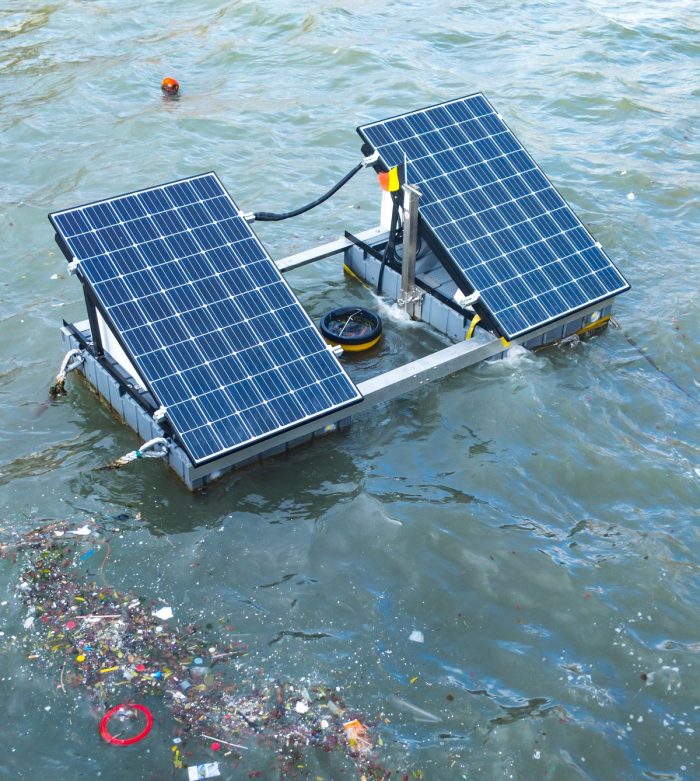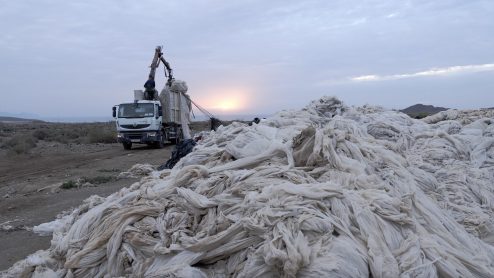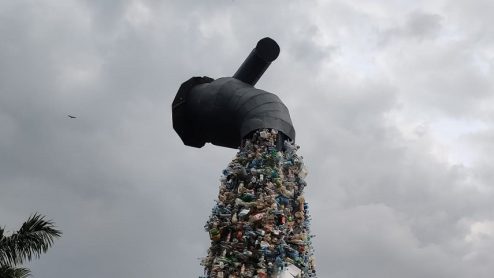New report finds marine plastic pollution clean-up technology is not all it seems on the surface
Our latest report highlights the damaging impacts of ‘quick fix’ ocean clean-up technologies.
The most well-known example is The Ocean Cleanup project (TOC), which has been found to have damaging environmental impacts on marine life.
In Clean-Ups or Clean-Washing?, EIA and our partner OceanCare are calling for international government delegates at the third round of UN negotiations on a Global Plastics Treaty in Nairobi, Kenya from 13-17 November to prioritise reducing production of plastics rather than focusing on clean-up technologies, which can be costly, damaging to the environment and distract from real solutions.
 As part of this Treaty, negotiators will be looking at remedial measures to support national action to end plastic pollution, particularly to address the disproportionate impact placed on the Least Developed Countries (LDCs) and Small Island Developing States (SIDS). Environmental organisations are calling for governments to focus on upstream solutions that reduce plastic production rather than relying on quick fixes that can have broader negative impacts.
As part of this Treaty, negotiators will be looking at remedial measures to support national action to end plastic pollution, particularly to address the disproportionate impact placed on the Least Developed Countries (LDCs) and Small Island Developing States (SIDS). Environmental organisations are calling for governments to focus on upstream solutions that reduce plastic production rather than relying on quick fixes that can have broader negative impacts.
One of these is the growing popularity of marine plastic clean-up devices or technologies that aim to collect and remove plastic pollution from the ocean. Research has identified 38 technologies (at different stages of use) that seek to tackle the plastic crisis through measures including drone and robots, sand filters, surface skimmers and vacuums.
EIA Ocean Campaigner Jacob Kean-Hammerson said: “It’s time to get real about clean-up tech. Our concerns lie in the role clean-ups play in distracting from more decisive solutions, such as reductions in production and consumption.”
While the purpose of these technologies sounds appealing on the surface, environmental organisations and academics are concerned that they pose a threat to the very same species and ecosystems they are seeking to help. They also warn such technologies distract from policy measures that actually address plastic pollution, such as tackling production and consumption.
“We recognise that clean-up measures are an inevitable and necessary part of a full lifecycle approach to ending the plastic pollution crisis,” said Kean-Hammerson. “However, governments and negotiators must seize the opportunity of the upcoming Global Plastics Treaty to put the necessary measures in place to ensure we are not endlessly cleaning-up plastics and, when we are, we’re putting people and the planet first”.
One major concern is that plastic and marine life often accumulate in the same areas. In the Great Pacific Garbage Patch, for instance, currents concentrate plastics and marine life in the same small areas. In Hawaii, 100 per cent of larval fish and 95 per cent of floating plastics are concentrated into only eight per cent of the ocean surface.

Solar-powered SeaBin
Furthermore, clean-up technologies have been recognised as a climate-intensive process because of the fuel they burn. Studies have found that 200 vessel-based clean-up devices would not clean the world’s oceans in more than 100 years of continuous operation, but there would be significant climate implications.
“These clean-up projects appear attractive to the wider public and also to decision-makers,” said OceanCare Plastics Policy Expert Ewoud Lauwerier. “Wouldn’t it be great to have such an easy solution, where ‘ocean vacuum cleaners’ enable business as usual?
“As attractive as it sounds, it is misleading. They are ineffective, capital intensive, falsely seen to be a solution and can even harm marine wildlife.”
The most well-known clean-up initiative is The Ocean Cleanup (TOC), established when its founder conceived of a machine to clean the Great Pacific Garbage Patch. It anticipated collecting between 9,900-14,900kg of waste per week, but researchers have estimated the reality is between 3.7-5.5 times lower than expected.
Environmental organisations and scientists have also raised concern about TOC’s impact on marine life. Reported bycatch from TOC’s 2020 high-seas clean-ups include: sea turtles (including endangered species), sharks, diverse fish species and cephalopods.
There has also been speculation about its links to the plastics industry due to its funders, who have previously included Saudi petrochemical and polymer producer SABIC, Dutch industrial conglomerate and plastics manufacturer DSM and Coca-Cola, which was named as the UK’s worst plastic polluter for the fourth year running earlier this year.
“Clean-up projects are a wonderful tool for the industry to distracting from the real problem. No surprise there, when you look at who the core funders are,” added Lauwerier.



